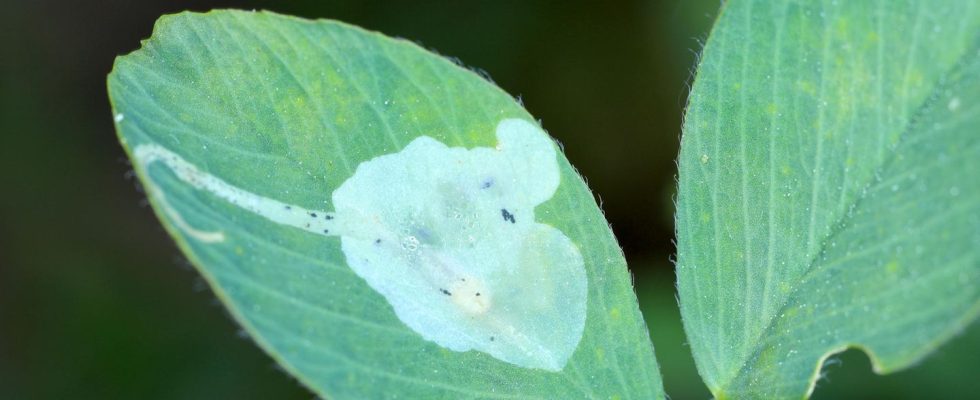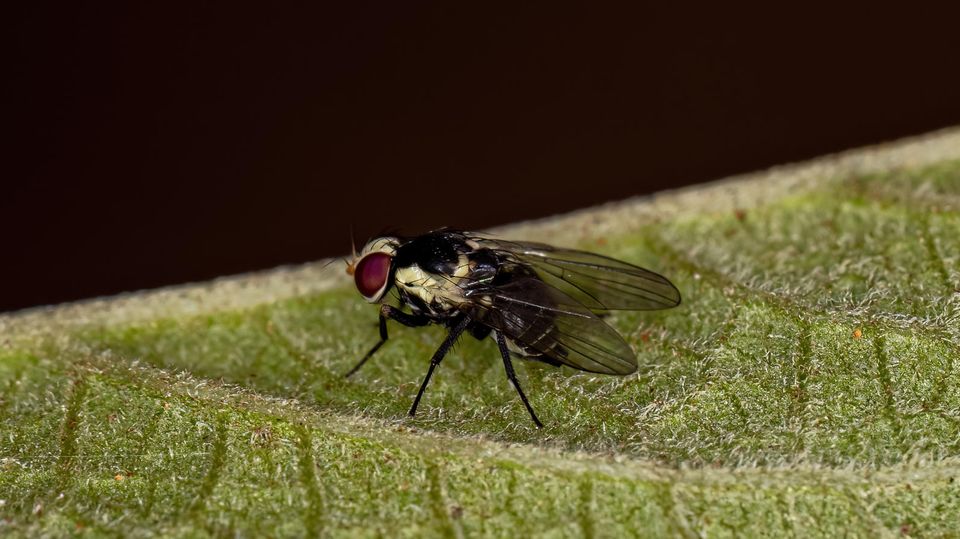ornamental plants and vegetables
White lines in the foliage? This pest sucks the life out of your plants
Typical signs of a miner fly infestation are small, white lines on the leaves
© Tomasz Klejdysz / Getty Images
When fine, white lines appear on the leaves of your ornamental or crop plants, a tiny pest has gotten to work: the leaf miner. She not only feasts on the plant sap, but also lays her eggs in it. How the infestation affects your plants and what you can do about it.
It is only a few millimeters in size and can still cause a lot of damage: the leaf miner becomes active in the warm summer months – and targets the fresh foliage of ornamental plants and vegetables. More precisely, it is the sap that the little pest drinks after it has pricked the plant of its choice. However, this does not result in the spiral-shaped tunnels on the leaves, which are an important indicator of the infestation. The actual feeding damage is caused by the larvae of the miner fly, which deposits their eggs in the bite site. To avoid the affected leaves (or in the worst case even the whole plant) dying, you should intervene in good time. We show you what you can do.
These signs indicate an infestation
A single leaf miner is capable of laying up to 400 eggs throughout its life cycle. Only a few days later, up to 400 larvae emerge, which eat their way through the foliage. This creates the typical “mines” – also called mining tunnels. The special thing about this technique is that the outer skin of the leaves is not damaged. For this reason, the white lines are a typical sign of the infestation. In fact, there is already an indication that a leaf miner is attacking your plants: tiny feeding holes that later expand into small tunnels. And cause the affected leaves to dry out, fall off and thus reduce plant growth. In addition, dangerous bacteria and fungi have an easy time at the puncture sites in order to damage the plants even more. It is all the more important to stop the infestation as quickly as possible.
So small and yet so harmful to useful and ornamental plants: the leaf miner fly
© ViniSouza128 / Getty Images
Stop miner fly? You can do that
If your ornamental plants or vegetable patches have been attacked by leaf miners, you can use biological pesticides which – and this is very important – are not harmful to bees: such as the “COMPO BIO insect-free neem” for all indoor, balcony and garden plants. Or you can rely on so-called beneficial insects that kill the pest naturally: Ichneumon wasps (only these two species: Dacnusa sibirica or Diglyphus isaea) lay their eggs in the larvae of the leaf miner so that their offspring can eat the fly larvae after hatching. If there are no more larvae, the parasitic wasps disappear again on their own.
A notice: Ichneumon wasps are more suitable for domestic use or closed greenhouses, as they are difficult to control outdoors. If the infestation is still fresh in the garden, you can collect the diseased leaves and dispose of them in the household waste (not on the compost!).
Tip: This is how you prevent miner flies
You can take preventive measures to prevent leaf miners from attacking your useful or ornamental plants in the first place – for example by using yellow boards. These are special glue boards to which the (adult) pests stick. Although this does not completely prevent an infestation, you will at least notice immediately when leaf miner flies want to drink their fill of your plants.
However, this method is less effective outdoors than indoors, as other insects can also cling to the yellow boards outdoors. Here it makes sense to plant the vegetable plants with close-meshed cultural protection networks from being attacked by the miner fly. The advantage here is: Other insects such as aphids or flea beetles, which could normally harm your beneficial insects, are also kept away from your beds.
Another way to prevent leaf miners is to produce nettle manure. The smell is said to have a deterrent effect on the sucking insects – but there is no scientific proof of this. However, since the ingredients also work well against other pests and the liquid manure promotes plant growth as a natural fertilizer, you cannot go wrong by using it.
Sources: Utopia, my beautiful garden, Chamber of Agriculture
You might also be interested in:
This article contains so-called affiliate links. Further information are available here.



